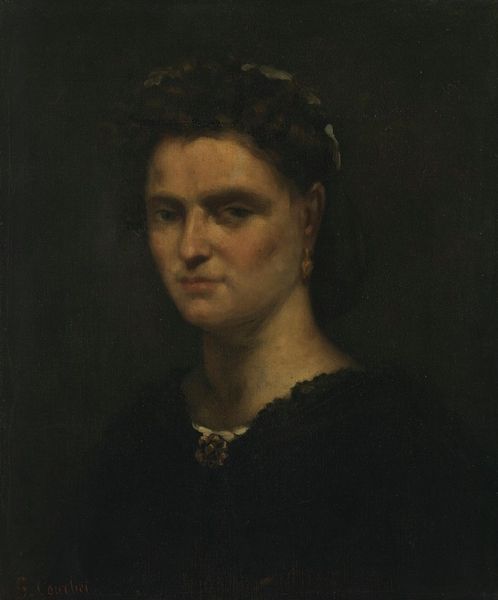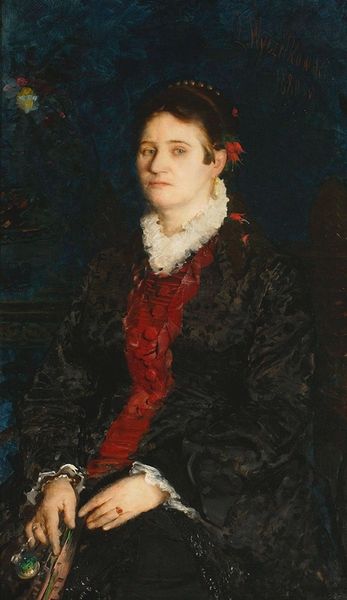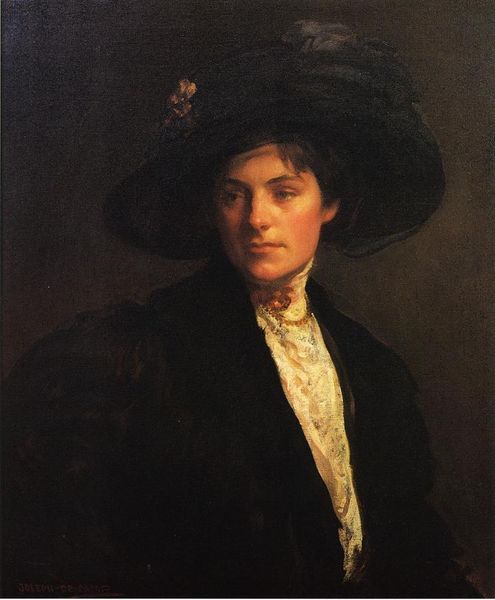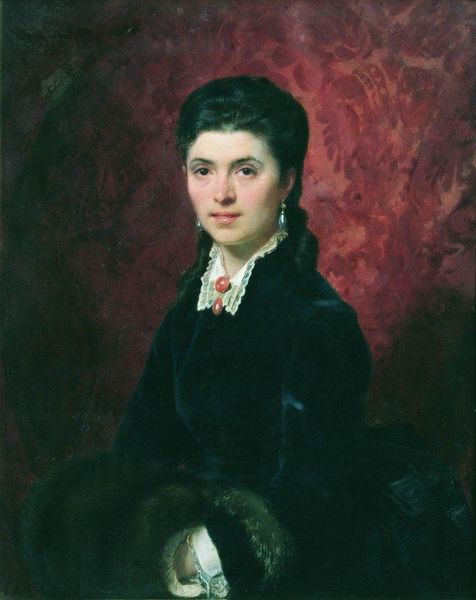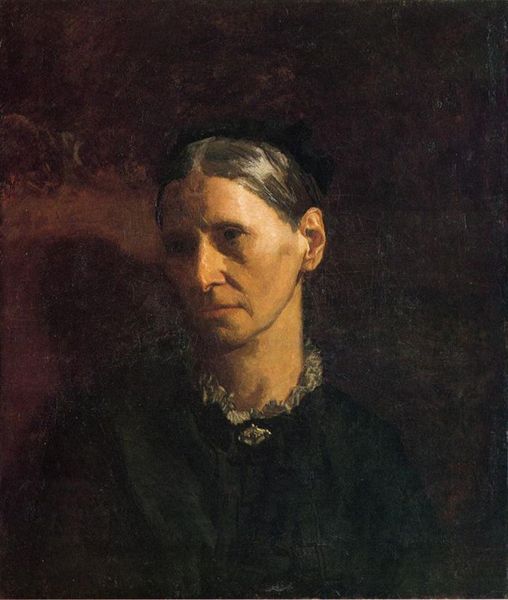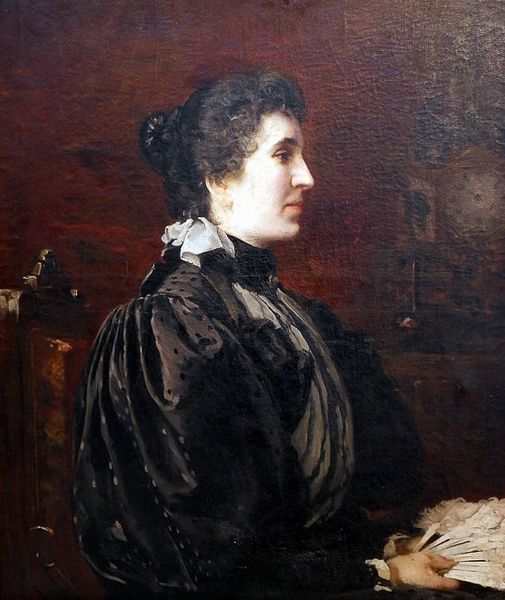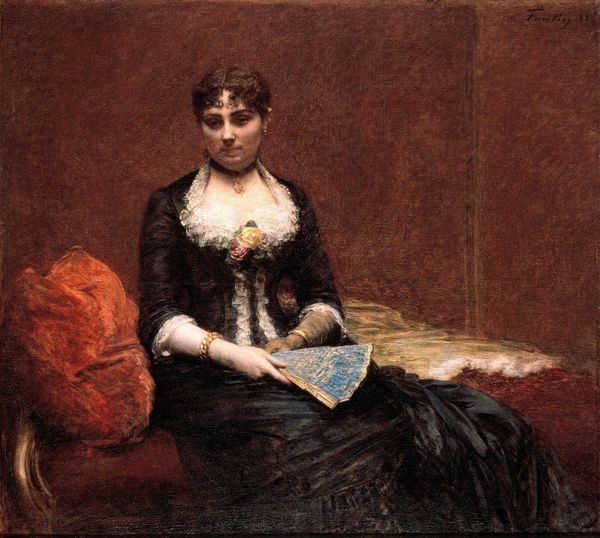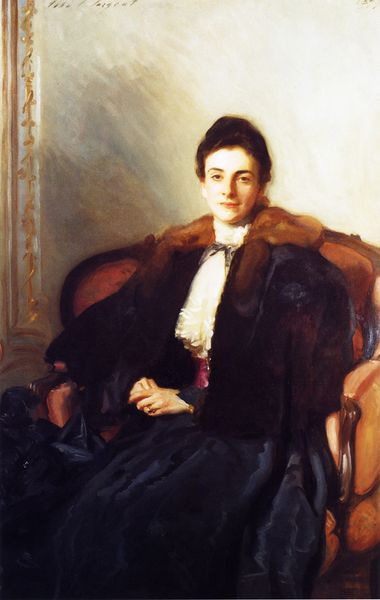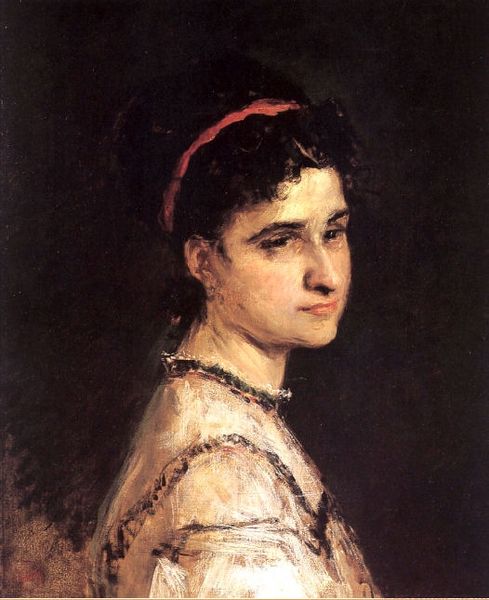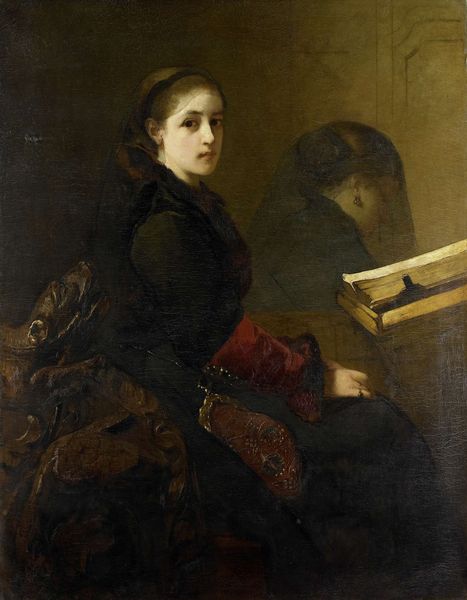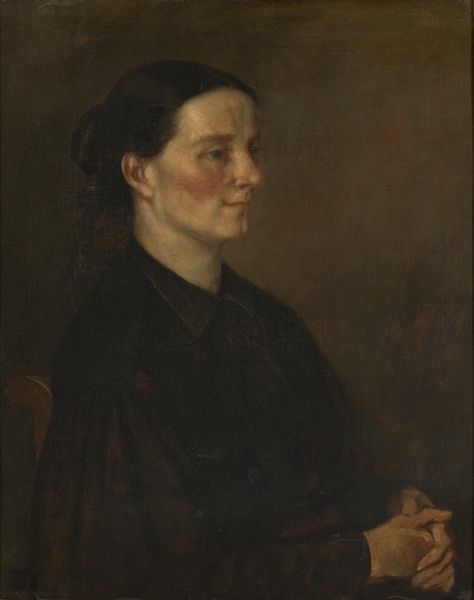
painting, oil-paint
#
portrait
#
painting
#
oil-paint
#
charcoal drawing
#
genre-painting
#
academic-art
#
realism
Copyright: Public domain
Curator: This is Thomas Eakins's "Portrait of Sarah Ward Brinton," an oil painting dating back to 1878. Editor: There's something very somber and serious about this piece, isn’t there? The dark tones give a feeling of domestic realism, maybe even a bit melancholic. Curator: It’s interesting that you mention domestic realism. Eakins was making a point of depicting everyday life, challenging the idealized portrayals common at the time. He captured the sitter with striking verisimilitude. Editor: Verisimilitude for sure. Look at her hands; you can almost feel the texture of the yarn she’s holding, or the sheen of the simple gold band on her finger. It makes me think about her labor. I wonder about the economic status this painting is communicating and how it plays into the narrative. Curator: It's known Eakins aimed for scientific accuracy in his portraits, moving away from romanticized portrayals. Consider the context: the late 19th century saw the rise of scientific naturalism across fields. Eakins embraced this within his artistic circle, creating accurate records. Editor: True. But what does such accurate portraiture achieve, and for whom? The darkness that dominates the painting suggests the limited possibilities offered for some in this period, where expectations are dictated by class, race, and gender. Curator: Absolutely. Eakins certainly portrays Brinton in a subdued and contemplative manner. The portrait wasn’t commissioned but was accepted as a gift, a somewhat common transaction that nonetheless reflects social norms around gift giving, taste, and power. Editor: I see it. Even her clothing indicates societal restraints; it's not overly embellished but is well-constructed with quality materials. I am stuck thinking about the material conditions of Brinton's existence. Curator: Well, in summary, it's this blending of an acute study of the sitter’s physical likeness and what we interpret from their status which makes it a noteworthy and important portrait of the period. Editor: Agreed. It gives me insight into both the artist’s approach and the societal structures surrounding both Eakins and Brinton.
Comments
No comments
Be the first to comment and join the conversation on the ultimate creative platform.
